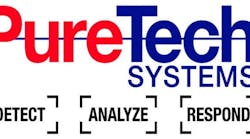With the safety of students and staff in our schools becoming more imperative than ever, institutions are now looking for advanced tactics to enhance their security measures. Central in this discussion is audio and video surveillance tied to access control systems.
Two school districts — one in Maryland and another in Utah — are at the front lines when it comes to the vital role audio and video surveillance plays at educational institutions.
Audio/Video for Visitor Management
Montgomery County Public Schools (MCPS), based in Rockville, is the largest school system in Maryland and the 17th largest school system in the United States. Its nearly 150,000 students learn in 202 different facilities — including elementary, middle and high schools, a technology center, five special schools and one charter school. It takes 22,000-plus employees, including nearly 12,000 teachers, to keep the school district up and running.
Recently, MCPS officials decided to re-examine its security needs with its primary security integrator, Rockville-based Netcom Technologies Inc., to determine if any processes were either outdated or could be enhanced. In doing so, MCPS and Netcom identified a serious need to better secure the main entrances of all 132 elementary schools while also maintaining parent and student traffic on the campuses.
To begin improving security, Netcom first observed the technologies already in place and discovered that some of the system’s existing capabilities could be leveraged and combined with some new technologies. Netcom ultimately designed a secure but cost-effective visitor control solution intended to give MCPS and its taxpayers the best value for the money while still ensuring the main entrances of the elementary schools were effectively and efficiently secured.
Specifically, Netcom used the existing video surveillance and access control technologies already in place to design a visitor control solution that would not only secure the egress doors to the schools and allow for selected visitor access through those doors, but also provide a user-friendly security option for the main office staff. In addition, Netcom tapped into an existing MCPS investment and maximized the efficiencies of their IP megapixel surveillance camera technology by integrating the AOP-SP-PB two-way audio monitoring solution from Louroe Electronics — an intercom door station with push button control stationed at the main entrance to each elementary school.
“Schools are looking for ways to boost their security and turning to audio to do so,” explains Roy Rea, President and CEO of Netcom. “When we install audio, we turn to Louroe Electronics to provide us with audio solutions.”
When approaching the entrance of the facility, a visitor activates the pushbutton on the intercom, which activates a pop-up window on the school security video user(s) screen in the school’s main office. That screen then provides a visual identification using an IP megapixel camera from IQinVision, running IQ access and audio communication via Louroe’s two-way communication unit. Once the visitor is identified and determined to be acceptable and safe, the facility management/security staff can then release the door lock that is being secured by a Maxxess netEdge unit located inside the school near the exterior door.
Audio Enhances Security Inside and Outside the Classroom
A similar situation occurred at some of the 41 schools in the Salt Lake City School District. These schools worked with Kratos in early 2012 to install a visitor management system similar to the ones in Maryland; however, this one goes a step further by monitoring audio not only at the school’s entrances, but also in the classrooms along with storing both video and audio footage for future reference.
Not only does this type of system protect students and staff but it also acts as a curriculum tool for students — providing a double-value proposition:
• Heightened access control and visitor management: School officials are able to view the guest’s identification — usually a driver’s license — then they can run a security check to determine if the individual has a criminal background and speak with the guest about his or her purpose for visiting the campus before they are granted access to the grounds.
• Educational curriculum tool: This is great news for students who miss a class, as they can catch up on their lectures and lesson plans by listening to their classroom audio on their own time. Teachers also benefit, as they no longer have to worry about bringing students who miss a class up to speed. What’s also great about this type of security system is the fact that both the video and audio footage are run over a protected network that is located either onsite or at a central monitoring station and stored for future reference/review. This means that the video and audio data act like a DVR and can be accessed at a later date.
Richard Brent is CEO of Louroe Electronics.



